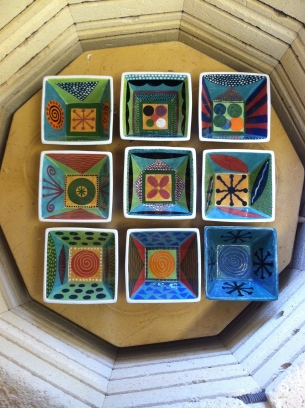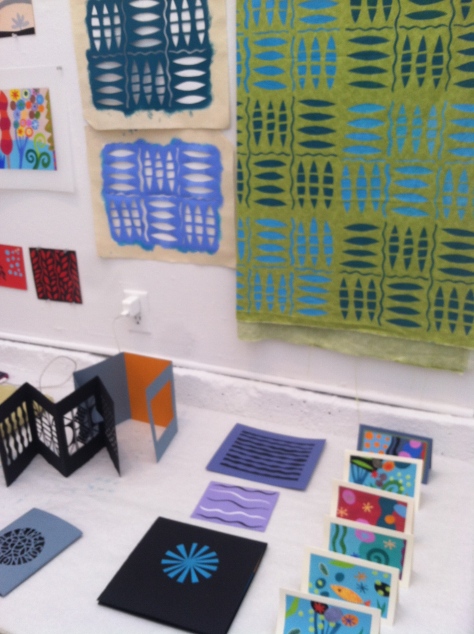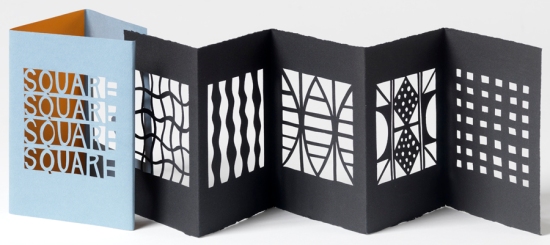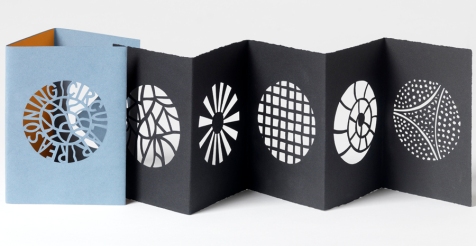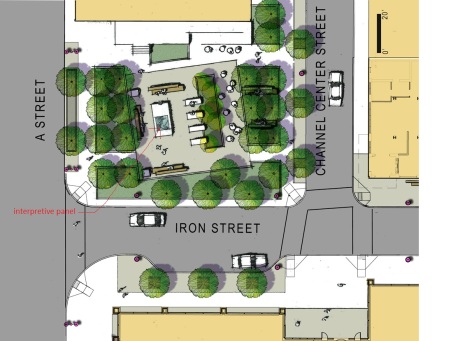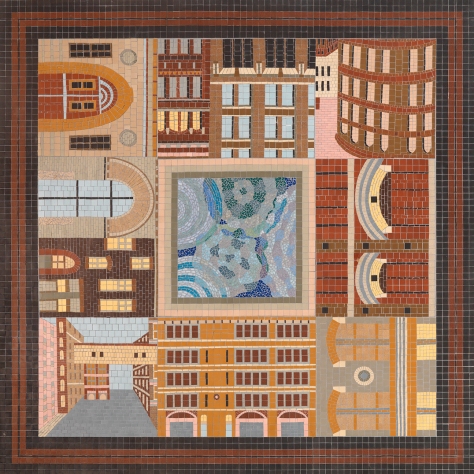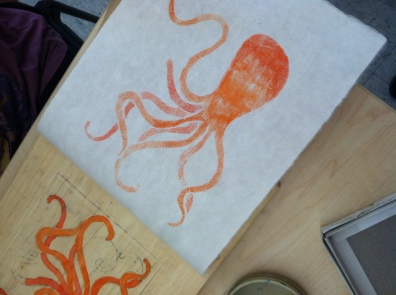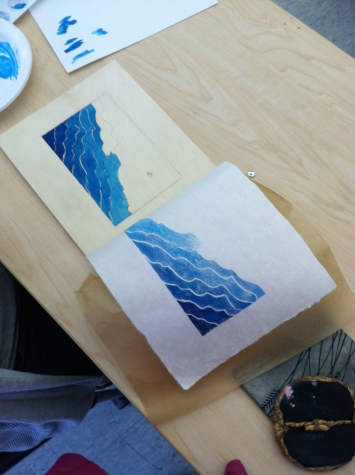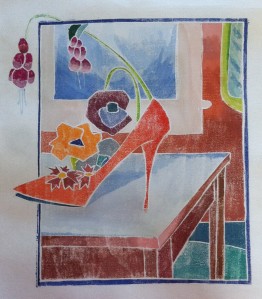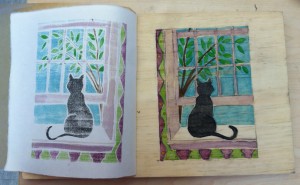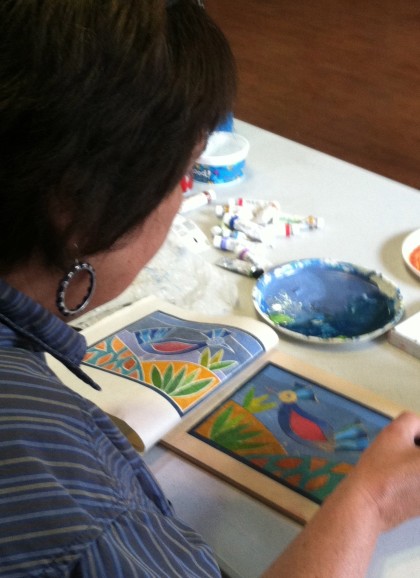Having recently spent five days at the American Mosaic Summit in Philadelphia, sponsored by the Society of American Mosaic Artists, my head is buzzing with thoughts about all of the presentations and workshops. I heard from Carrie Reichardt, who works against capital punishment through craftivist mosaic sculptures. I enjoyed the talk by Isaiah Zagar where he told us about the history of the Magic Gardens, which now cover several city blocks in Philadelphia and sometimes attract over 600 visitors in a day.
The morning after I arrived, I participated in one of the day-long tours that the Mosaic Society of Philadelphia had organized. My tour was led by Philadelphia artist and teacher Robyn Miller. We stopped at congregation Rodeph Shalom to look at the mosaics on the main street entrance of the building.

We ran into a congregant, David Shapiro, who was walking to work and he arranged for us to gain entrance to the building to see additional mosaics inside as well as a lushly painted and stenciled interior.

Our next stop was the Glencairn Museum outside of the city in Bryn Athyn. The interior was filled with mosaics which had been made on site in a glassblowing studio. The artisans were hired by Raymond Pitcairn, an exacting man who built this castle for his family. The glassblowers were tasked with finding formulas that would look like the tiles used in the middle ages. Through extensive testing they determined that over-firing the glass would give the tiles a stone-like appearance. This museum was a testament to the handmade: every inch was well crafted, whether it was stone, glass, wood or woven textiles.

Next we went to The Village of Arts and Humanities in north Philadelphia that was started years ago by painter Lily Yeh. She went to this neighborhood to create a public art mural and she became permanently connected with the people she met there. She started working with people who were strung out on drugs or recently incarcerated and she helped them to see different paths. We were very lucky to have Lily herself show us around the garden. Neighborhood people were coming out of every door to greet her and hug her. She has helped save lives and has established a children’s art center where clay pieces are made that are used in fabricating sculptures and walls and memorials throughout several city blocks in this destitute part of the city of Philadelphia. The children now have a place to go after school, and many of Lily’s helpers have become employed in the arts.

This installation is much like Isaiah Zagar’s Magic Gardens which also grew up in an abandoned city lot in Philadelphia. Things are made out of what can be found and with materials that often don’t last. Mosaics fall apart as quickly as they can be built, but the Village of Arts and Humanities is tended and loved by the community. Walls need to be buttressed because the buildings behind the mosaic murals are crumbling. Sculpted chairs need to be re-tiled and re-grouted periodically, but now there is a small staff that tends to these things. This is life-changing, life-saving art in action. Each corner is a little rough around the edges, but the artworks are all special to the community. Lily Yeh embodies the idea of art that helps people and communities put the pieces back together.
















